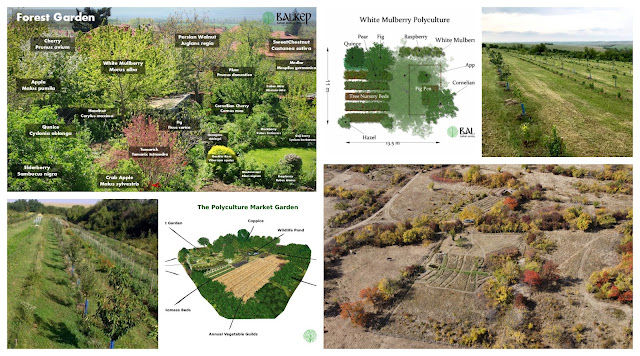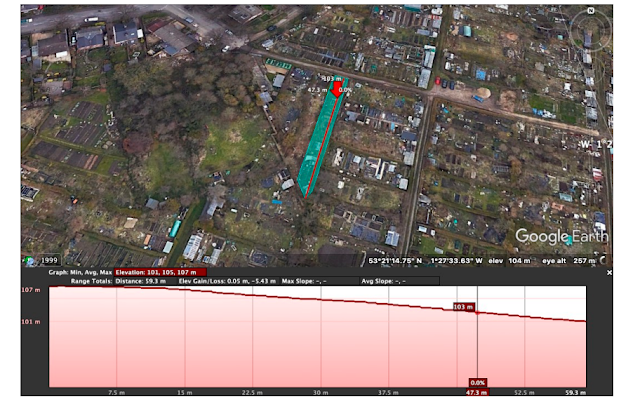It's been a great experience running our Regenerative Landscape Design - Online Interactive Course where we cover how to Design, Build and Manage Polycultures for Landscapes, Gardens, and Farms. It's particularly rewarding getting to know the participants and their projects from all over the world and watching their ideas and designs grow and develop throughout the course and finally be presented to the group. With permission, we'll be sharing some of the final designs from the course with you over the next few months.
This week we're presenting a design from Daniele Rinaudo based on the development of a social enterprise fruit tree nursery in Sheffield, Unified Kingdom
Sheffield Fruit Trees – MOGS Site by Daniele Rinaudo
Sheffield Fruit Trees is a social enterprise fruit tree nursery. We grow a range of fruit trees, soft fruit and perennial edibles for sale and support local groups in setting up community orchards. The intention of this design is to develop our current main site on the MOGS plot of the Heeley & Meersbrook allotment site. This plot is where we grow all of our trees and plants for sale and where we intend to run workshops on tree-grafting and pruning etc in the future. This year we have cultivated 250 maiden fruit trees (apple, pear, cherry, plum, medlar, apricot), 50 soft fruit bushes and 30 herbaceous edibles as well as 100 or so trees remaining from last year's stock. Our intention is to grow at least 50% of our fruit trees as bare-rooted trees that have been budded instead of bench grafted. This needs to be reflected in the site design.
Design Objectives
The purpose of re-designing the site is:
- to increase growing capacity
- to streamline our current irrigation, compost and growing systems
- to increase soil health and biodiversity
- to set the site up for more bare-root tree production – to make the site more accessible to customers and workshop attendees
- for the site to be a demonstration site for tree growing and polyculture
- to beautify the site and create a space beneficial for mental health
Site & Survey
The site is one of the 400+ allotment plots on the largest allotment site in Sheffield. It is located in the Meersbrook area of Sheffield surrounded by residential streets and Cat Lane/Hang Bank Woods. Along the North edge of the site runs a small watercourse called the Meers Brook. The plot was handed on to us by Meersbrook Organic Growing Soc. Who had been cultivating it for a number of years previously under the guidance of Darrell Maryon from Heeley City Farm.
The plot is well sheltered being surrounded on all sides by privet or mixed native (cratageus, ribes, corylus, fraxinus, ilex, prunus) hedges of at least 5ft in size. Our plot's orientation is close to being on a NorthSouth axis with the bottom of the slope being at the North end (unfortunately).
Access is good – the main site gate is only 35m from our plot and vehicle tracks run straight past the gate. There is a car-park situated 50m in the other direction from the main gate.
Site Layout
Breakdown of site layout/elements:
Water system/Irrigation
Infrastructure – Greenhouse/workshop space, bike hangers and storage, compost bays, compost toilet, tool shed
Nursery beds/production
Productive Polycultures
Support polycultures
Micro habitats
Climate Survey
Water harvesting/Irrigation
Water Harvesting Potential
The Site Design
The Polycultures
Site Species Master List
If you would like to get in touch with Daniele you can reach him at sheffieldfruittrees@gmx.com, and on Facebook and Instagram (@sheffieldfruittrees).Regenerative Landscape Design - Online Interactive Course
Want to learn how to design, build and manage regenerative landscapes? Join us on our Regenerative Landscape Design - Online Interactive Course. We look forward to providing you with the confidence, inspiration, and opportunity to design, build and manage regenerative landscapes, gardens, and farms that produce food and other resources for humans while enhancing biodiversity.
You can find the course details here and at the moment we have a $350 ( 20%) discount for full enrollment to the course. Just use RLD2024 in the promo code section of the registration form to receive your discount.
Support Our Project
If you appreciate the work we are doing you can show your support in several ways.
Become a member of the Bloom Room. A $70 annual or $7 per month subscription to our Substack provides you with access to live sessions, design tutorials, a members forum and more, see details here.
Make a purchase of plants or seeds from our Nursery or Online Store
Joining us for one of our Practical Courses or Online Courses
Comment, like, and share our content on social media.
If you appreciate the work we are doing you can show your support in several ways.
Become a member of the Bloom Room. A $70 annual or $7 per month subscription to our Substack provides you with access to live sessions, design tutorials, a members forum and more, see details here.
Make a purchase of plants or seeds from our Nursery or Online Store
Joining us for one of our Practical Courses or Online Courses
Comment, like, and share our content on social media.



















No comments:
Post a Comment